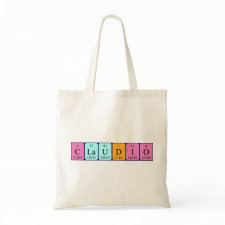
Authors: Baggiani C, Baravalle P, Anfossi L, Tozzi C
Article Title: Comparison of pyrimethanil-imprinted beads and bulk polymer as stationary phase by non-linear chromatography.
Publication date: 2005
Journal: Analytica Chimica Acta
Volume: 542
Issue: (1)
Page numbers: 125-134.
DOI: 10.1016/j.aca.2004.10.088
Alternative URL: http://www.sciencedirect.com/science/article/B6TF4-4F3NXXV-8/2/6ab74ae82d84ae6d637f8b994ea16057
Abstract: A pyrimethanil-imprinted polymer (P1) was prepared by iniferter-mediated photografting a mixture of methacrylic acid and ethylene dimethacrylate onto homemade near-monodispersed chloromethylated polydivinylbenzene beads. The chromatographic behaviour of a column packed with these imprinted beads was compared with another column packed with irregular particles obtained by grinding a bulk pyrimethanil-imprinted polymer (P2). The comparison was made using the kinetic model of non-linear chromatography, studying the elution of the template and of two related substances, cyprodinil and mepanipyrim. Extension of the region of linearity, capacity factors for the template and the related substances, column selectivity, binding site heterogeneity, apparent affinity constant (K) and lumped kinetic association (ka) and dissociation rate constant (kd) were studied during a large interval of solute concentration, ranging between 1 and 2000 μg/ml. From the experimental results obtained, in the linearity region of solute concentration column selectivity and binding site heterogeneity remained essentially the same for the two columns, while column capacity (at 20 μg/ml, P1 = 23.1, P2 = 11.5), K (at 20 μg/ml, P1 = 8.3 X 106 M-1, P2 = 2.5 X 106 M-1) and ka (at 20 μg/ml, P1 = 3.5 μM-1 s-1, P2 = 0.47 μM-1 s-1) significantly increased and kd (at 20 μg/ml, P1 = 0.42 s-1, P2 = 0.67 s-1) decreased for the column packed with the imprinted beads. These results are consistent with an influence of the polymerisation method on the morphology of the resulting polymer and not on the molecular recognition properties due to the molecular imprinting process
Template and target information: pyrimethanil
Author keywords: molecular imprinting, Pyrimethanil, grafting, non-linear chromatography, affinity constant, dissociation rate constant, association rate constant, selectivity



Join the Society for Molecular Imprinting

New items RSS feed
Sign-up for e-mail updates:
Choose between receiving an occasional newsletter or more frequent e-mail alerts.
Click here to go to the sign-up page.
Is your name elemental or peptidic? Enter your name and find out by clicking either of the buttons below!
Other products you may like:
 MIPdatabase
MIPdatabase









